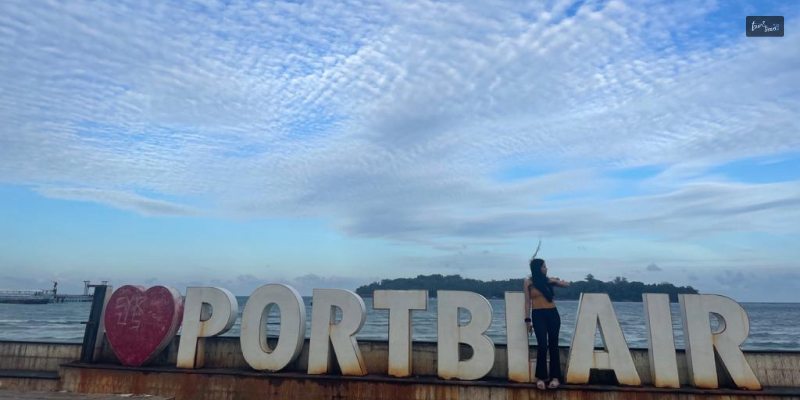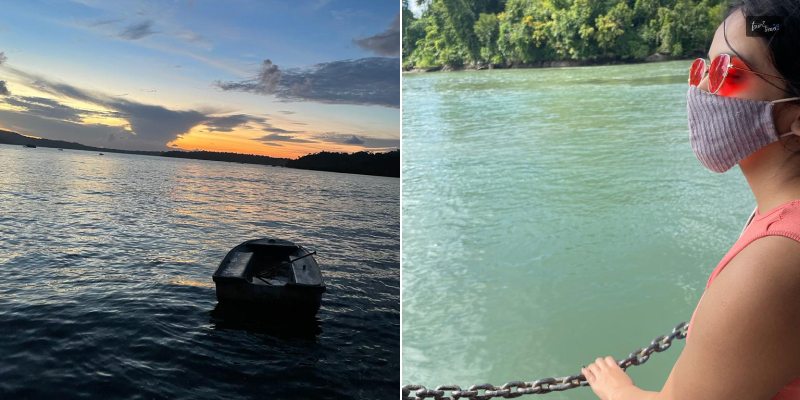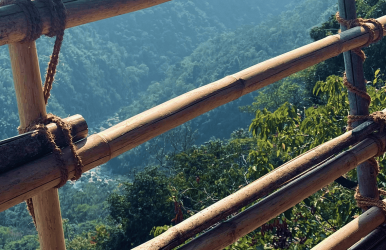Things You Need to Know to Do the Mawryngkhang Trek!
BY Anindita Dey Mar 27, 2025
When introducing Mawryngkhang trek, I would like to highlight that it is one of the most beautiful trek destinations in Meghalaya. A bit difficult, it is one of the coolest places to be if you love nature. With the pace you set, you can experience some of the most beautiful flora and fauna. Additionally, you will see how monsoons as a season can make a place look so much more beautiful. Meghalaya with its lush green forests, waterfalls, steep slopes, and bamboo bridges welcomes you with all its glory in this trek. I would even go on to say that it is one of the best places to visit in February for a trek. The weather is dry along with a bit of a mix with various wildlife and trees. Things You Need to Know to Do the Mawryngkhang Trek! Known as the Bamboo Trek, when you are preparing for the Mawryngkhang Trek, you must be prepared. Moderately difficult, this trek will need you to be at your best, both physically and mentally. There are some essential gears which you must carry so that you can have a good trek. Simultaneously, you also need to be aware of the inclination of the slopes, the sheer drops, the height and also the number of bamboo bridges on the trail. Overall, read the blog to follow the significant tips which will make your travel to Mawryngkhang trek location much easier. I wouldn’t say it is one of the best places to travel with kids, especially if you are trekking. What is more important is you have to do good research before you plan on traveling there. Best Time to Visit If you ask me, the best season to visit Meghalaya if your purpose is to trek is during the dry season. From October to April, you can go on a trek and enjoy yourself while taking a walk across the trails. The Mawryngkhang trek is a bit difficult hence, it is important for you to be careful and do not risk as the trail can be slippery. The round trip is about 3.54 kilometers hence, for an experienced trekker, it might take 3 to 5 hours. It also depends on your fitness level and your pace. With the difficulty level as moderately difficult, you should do proper research, fitness evaluation and then go ahead with the trek. Essential Gear to Take There are important things to carry with you, especially when you are going on a trek. The trail of the Mawryngkhang Trek can be a bit tricky and slippery hence, you need these essential gears to carry so that you do not face any issues while enjoying the trek. Going to one of the exotic places to travel, you should know the significant things you must carry on this trip. Comfortable clothing It is important to wear comfortable clothing especially when you are trekking. Comfortable clothing also means breathable clothing which lets you move well, with flexibility and easy movement. Furthermore, comfortable clothing also ensures that you're clothing easily dries if you get drenched or if you sweat profusely. Water bottle Constantly drinking water is advisable in our daily routine. So, imagine when you are going on a trek, your body is going through severe physical movement! Drink water regularly while on the trek, hence you need to stay hydrated. You should use reusable water bottles especially when you are on a trek. You need to be sustainable along with environmentally friendly because it reflects your nature lover streak. Sun protection While going on a trek, you need to carry things that will protect you from the direct rays of the sun including sunglasses, a hat, and scarves. Additionally, apply sunscreen constantly and before you start your trek which will protect you from getting sunburned. Sturdy shoes It is quite important to wear sturdy shoes especially when it comes to having a good grip. When trekking, you also need good ankle support, henceforth, you do not get sprains. It is therefore significant for you to wear sturdy shoes that will support your feet while crossing bamboo bridges and walking on uneven terrains. Rain gear Meghalaya is well known for its changing weather, especially the way rain comes. It is therefore imminent a step for you to carry your rain gear, be it a poncho or a raincoat. Overall, unpredictable weather can be a concern for your trek so focus on your overall plans so that you do not face any concern. Snacks Carry some granola bars, nuts or fruits that will give you energy and are easy to carry. When you are on a trek, you should have bites of energy boosting food items or drinks that will establish your energy throughout the duration of your trek. Safety Precautions You Need to Trek There are some precautions which you need to take when traveling to Meghalaya, especially when you go to Mawryngkhang Trek. Follow the precautions that I am mentioning below and do implement them so that you resolve any issues. Respecting Nature Meghalaya is known for its nature and respecting nature is one of the most important rules here. When you have decided to go on a vacation, trekking to different places, visiting waterfalls and other elements, do respect nature. You must respect the environment there and follow the available trail. Try not to walk all over the flowers, plants, roots and trees while going off road. It damages the plants along with increasing the risks of hampering many unique plants. Also, please do not litter on the forest floor! Trails are often filled with plastic packets and wrappers of food, drinks, and other used things. Please avoid doing that because it disrespects nature. Follow Bridging Rules One of the most important elements that you will find mostly everywhere in Meghalaya when outdoors is the bamboo bridges. These bridges are mostly manually designed hence, the capacity of the bridge is limited. It is therefore advised that only one person crosses a bridge at a time. Please remember this and accordingly cross one at a time so that the next person can cross it relaxedly. Hire Local Guides You can hire a local guide because it is not just about you experiencing something adventurous but also about enhancing the overall experience. The terrain might not be completely understandable to you because you are visiting it for the first time. This is where a local guide will help you because they know the landscape better than you. Additionally, the local guide also helps you if there is an emergency such as a fall, cut and gashes to the skin, sprained ankle and others. Tips to Trek the Mawryngkhang Trek These are significant tips that will help you plan your trek to Mawryngkhang. I am sharing with you these tips because I felt, if I knew these before, it would have been for me. Let's make you more prepared to deal with certain issues that might make it a little difficult for you. No Accommodation This is one of the most important things to know especially because it will dictate your overall plan to visit Meghalaya. There are no accommodation or lodge facilities available in Wahkhen, which is the nearest location to Mawryngkhang Trek. It is better if you book your stay somewhere else. Accordingly arrange your own transport and visit the place. Then you can go ahead and do the trek which once completed, arrange your own transport to pick you up to return. Be Prepared for Heights The trek is a bit difficult due to its height as you will have to cross steep climbs while on the trek. There are several narrow bridges which you need to cross while on this trek hence, if you are fearful of heights, you need to reconsider the trek. It is better to avoid the trek if you have serious issues of height. Start Early If you are someone who loves tranquility, this is the place for you. However, you need to start early when going on Mawryngkhang Trek so that you are not forced to speed up if there is a line behind you. Considering the place is quite popular for trekking, there is a bit of a rush. It is better if you go early and enjoy your trek, taking time and relaxing while trekking. Instead, if you constantly fret about how there are people behind you and the narrow climbs and bridges ensure that you must make a single file while trekking. Enjoy the Views A stunning view awaits you on your trek to Mawryngkhang Trek because the trails are filled with unique flora and fauna. You experience beauty in all its glory where there is no human influence. Instead, it is all just the lush green beauty of nature. Check out the stunning valleys, lakes and waterfalls which you see while on the Mawryngkhang Trek. Keep in mind that there will be issues with the trail paths as there are some difficulties hence, it is better if you are regularly moving, flexible and fit. Let’s get that Backpack! Now that I have shared with you all about Mawryngkhang trek, you should start planning your next visit. It will be a more fun trip if you make a group of all your trekking friends who will enjoy the place just like you. Comment below on what you think of the information I have shared. You can further add some of the safety tips that you swear by when traveling for a trek. Also read Top 10 Most Popular Paraguay Food That You Must Try. Top 13+ Famous Wonders Of India That You Must Visit.



















